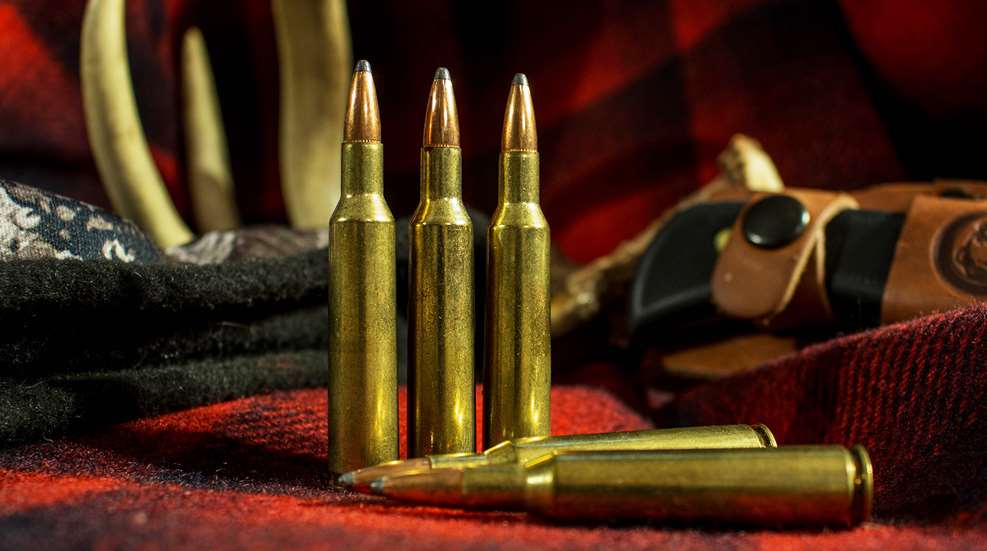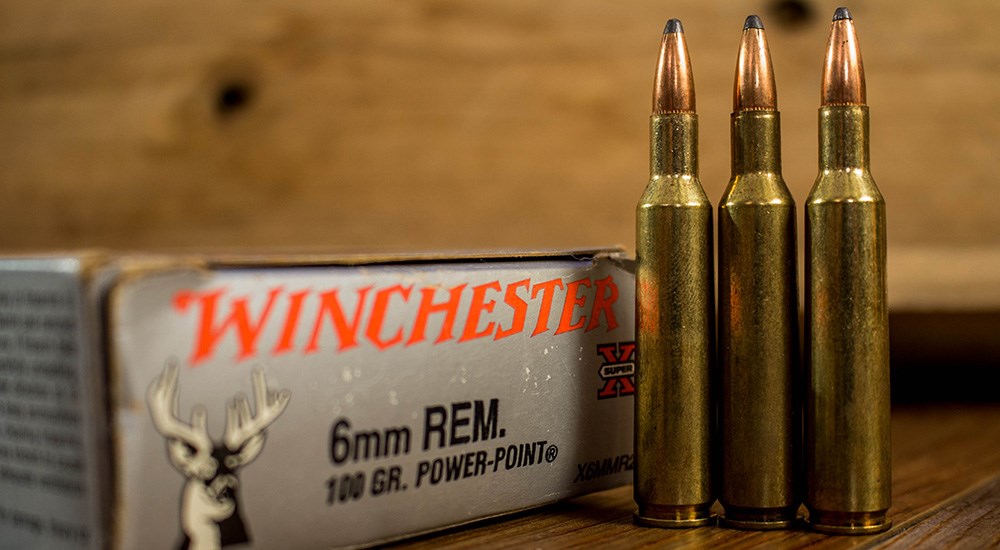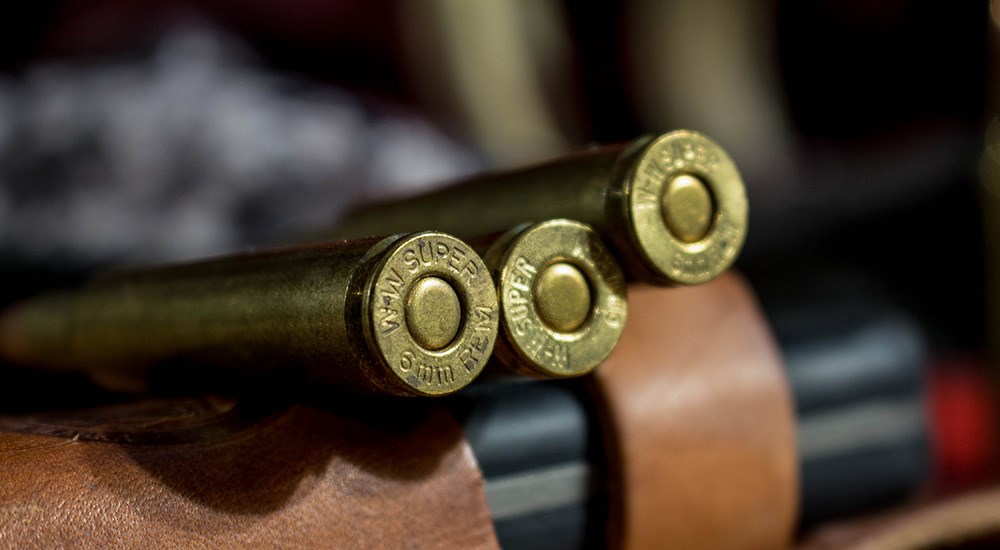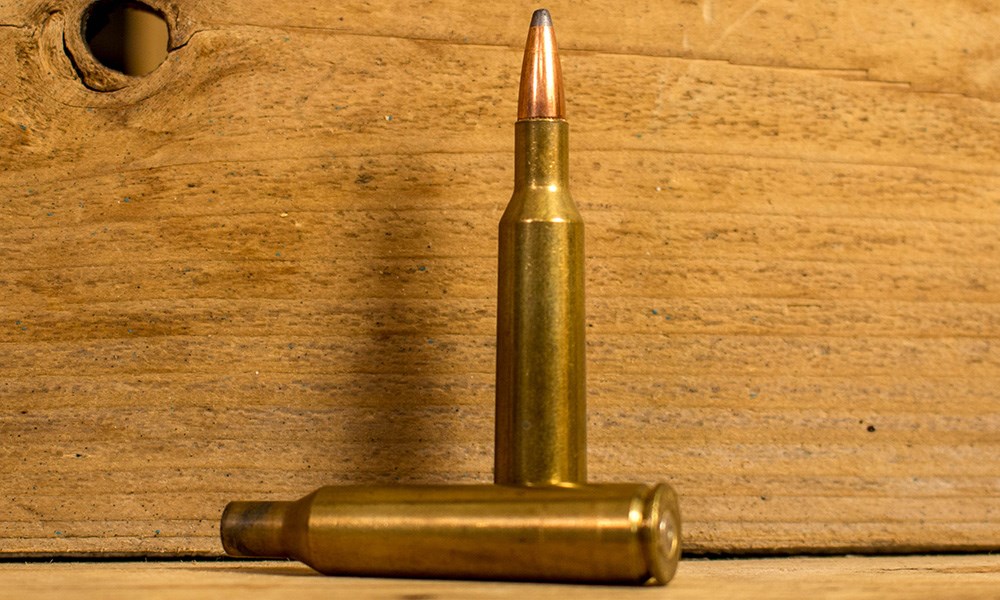
The boom in cartridge development after the conclusion of World War II gave us an amazing list of very useable cartridges. From the heavy .458 Winchester Magnum to the speedy lineup of Weatherby cartridges in do-all calibers, there was definite proof that the sportsmen were hunting and traveling, and buying the gear for it. The American shooting market got excited about seemingly untouched bore diameters like the .338”, though the .33 Winchester was around first, and .264”, in spite of the 6.5x55 Swede and 6.5x54 Mannlicher Schöenauer, not to mention the new 6mm cartridges.

Before the 6mm craze of the mid-1950s, only the 6mm Lee Navy had been even remotely popular in the United States, and that was back in the 1890s. In 1955, Remington announced their .244 Remington; looking at the genealogy, it was Remington’s .257 Roberts necked down to hold .243-inch-diameter bullets, with the .257 Roberts itself being a necked-down 7x57mm Mauser. The concept for the .244 Remington came from Fred Huntington’s .243 Rock Chucker wildcat (the same necked down .257 Roberts) which was then brought to the masses by Remington’s Mike Walker.
The 6mm Remington shares the same case length as the 7x57 and .257 Roberts at 2.233 inches, and the same .473-inch diameter as its family, but the shoulder angle was increased to 26 degrees. It was billed as a dual-purpose cartridge, which could handle varmints and predators just as well as it could deer and similar-sized game. Remington released the .244 in their Model 722 bolt-action rifle, equipped with barrels using a 1:12-inch twist rate to best optimize performance with the bullets weighing between 75 and 90 grains. The idea was to offer the hunter a 75-grain bullet at a higher muzzle velocity for sniping varmints and hunting furbearers, while offering the heavier 90-grain slugs for use in the pursuit of deer, pronghorn antelope and similar big game species. This might have played out just perfectly, except for one niggling problem.
Winchester had released their own 6mm cartridge the same year as Remington had; their .243 Winchester was the .308 Winchester case necked down to hold 6mm-diameter bullets. And while it is quite obvious that the .244 Remington has more case capacity than does the .243 Winchester, the latter was released with a 1:10-inch twist rate, and would stabilize the 100- and 105-grain bullets, where the slower twist rate of the .244 Remington would not. While 10 or 15 grains of bullet weight might not seem a big deal when discussing a 7mm- or .30-caliber bullet, it is when talking about the 6mms. The market quickly favored the .243 Winchester for the heavier bullets available, as the 100- and 105-grain bullets proved to be better choices for the deer hunter. While I’m not a fan of popularity contests, sales are what drive the market, and Remington knew it had a problem on their hands.

They attempted to right the ship by changing the twist rate of the barrels of the Model 722—and later the Models 740, 742 and 760—to a tighter 1:9-inch twist rate, though the factory Remington ammo still topped out at 90 grains. In 1963, when Remington released their now-famous Model 700 rifle, they also made a valiant attempt to rebrand the .244 Remington by renaming it the 6mm Remington, and continued to use the 1:9-inch twist rate. New 6mm Remington ammunition would feature a 100-grain Core-Lokt bullet, which would be properly stabilized by the new Model 700 and any of the earlier rifles which had the 1:9-inch twist rate.
Dimensionally, there is absolutely no difference between the .244 Remington and the 6mm Remington. Any ammunition labeled .244 Remington can be fired from a rifle marked as being chambered for 6mm Remington. The vast majority of modern ammunition for the 6mm Remington is built using 95- and 100-grain bullets at a muzzle velocity between 3100 and 3250 fps. Looking at Federal’s 100-grain Nosler Partition load, you’ll see that the 6mm Remington delivers a trajectory similar to the 7mm Remington Magnum or the .300 Winchester Magnum. With a 200-yard zero, it will drop 6.5 inches at 300 yards, 19.2 inches at 400 yards and 39.2 inches at 500 yards. This load will generate over 2,100 ft.-lbs. of energy at the muzzle, and maintain that mythical 1,000 ft.-lb. mark out to 400 yards. The 6mm Remington also does alright in the wind, with that bullet being pushed just over 13 inches in a 10 mph crosswind at 400 yards. For a shooter who wants the ability to cleanly take deer at the most common hunting ranges, the 6mm Remington fits the bill nicely.

One of the major drawbacks to the 6mm Remington is the availability of factory ammunition. In my opinion, the true appeal of the 6mms is the ability to fulfill the role for which they were first developed: a dual-purpose small/big-game cartridge. If you have a 6mm/.244 Remington rifle, and want to take full advantage of the capabilities, handloading is the simplest answer. Projectiles are no issue, as the popularity of the .243 Winchester, 6mm Creedmoor, and other 6mms ensure a consistent supply of quality bullets. Brass isn’t impossible to come by, and in a pinch can be made from 7x57 cases by necking down and fire-forming. Look to powders like IMR4350, IMR 4831 and Reloder 22, sparked by a large rifle primer. In addition to the popular big game bullets like the Nosler Partition, AccuBond and Ballistic Tip, Hornady ELD-X and CX, and Barnes TTSX, there are plenty of lightweight, frangible varmint bullets like the Speer TNT, Nosler Ballistic Tip Varmint and Sierra BlitzKing.
As one of the older 6mm cartridges, the 6mm Remington might seem antiquated in comparison to the 6mm Creedmoor, 6mm XC and 6mm ARC, but for a hunter who stays inside of 400 yards, Big Green’s 1955 design will still get the job done, just as the .243 Winchester does. If you are a scourer of the dusty corners of gun shops, and happen to find a rifle chambered for the 6mm Remington—or even a .244 Remington—and can handload for it, you might have found a new friend. The time I've spent behind the trigger of a 6mm Remington has been nothing but positive.
Looking for previous installments of our "Behind the Bullet" series? We've got you covered.
• .270 Winchester Short Magnum
• 360 Buckhammer
• 30 Nosler
• 7-30 Waters
• .370 Sako Magnum
• .17 HMR
• 6.5 Weatherby RPM
• .327 Federal Magnum
• .450 Bushmaster
• 7mm PRC
• .275 Rigby
• .340 Weatherby Magnum
• .416 Ruger
• 27 Nosler
• .257 Roberts
• 7mm Weatherby Magnum
• .300 PRC
• .350 Rigby Magnum
• .450 Nitro Express
• .17 Hornet
• 7mm STW
• 6.8 Western
• .375 Ruger
• .223 Remington
• 6.5x55 Swedish
• .416 Remington Magnum
• .300 Winchester Short Magnum
• 28 Nosler
• 6.5 PRC
• .22 WMR
• .458 Winchester Magnum
• .22 Hornet
• .280 Ackley Improved
• .240 Weatherby Magnum
• .458 Lott
• .264 Winchester Magnum
• .348 Winchester
• 33 Nosler
• .260 Remington
• .30-30 Winchester
• .416 Rigby
• .358 Norma Magnum
• .22 LR
• 7mm-08 Remington
• 8mm Remington Magnum
• .338 Federal
• .224 Valkyrie
• .338-06 A-Square
• 9.3x62mm Mauser
• .257 Weatherby Magnum
• .45-70 Government
• .300 H&H Magnum
• .25-06 Remington
• .30-06 Springfield
• 6.5 Creedmoor
• .300 Remington Ultra Magnum
• 7mm Remington Magnum
• .470 Nitro Express
• .280 Remington
• .300 Winchester Magnum
• .270 Winchester
• .222 Remington
• .45 ACP
• .404 Jeffery
• .44 Remington Magnum
• .41 Remington Magnum
• .243 Winchester
• .338 Winchester Magnum
• .357 S&W Magnum
• 6.5-284 Norma
• 8x57 Mauser
• .38 Smith & Wesson Special
• 7x57mm Mauser
• 9mm Luger
• .35 Whelen
• .454 Casull
• .375 H&H Magnum
• .45 Colt
• .22-250 Remington
• 10mm Auto
• .308 Winchester




































